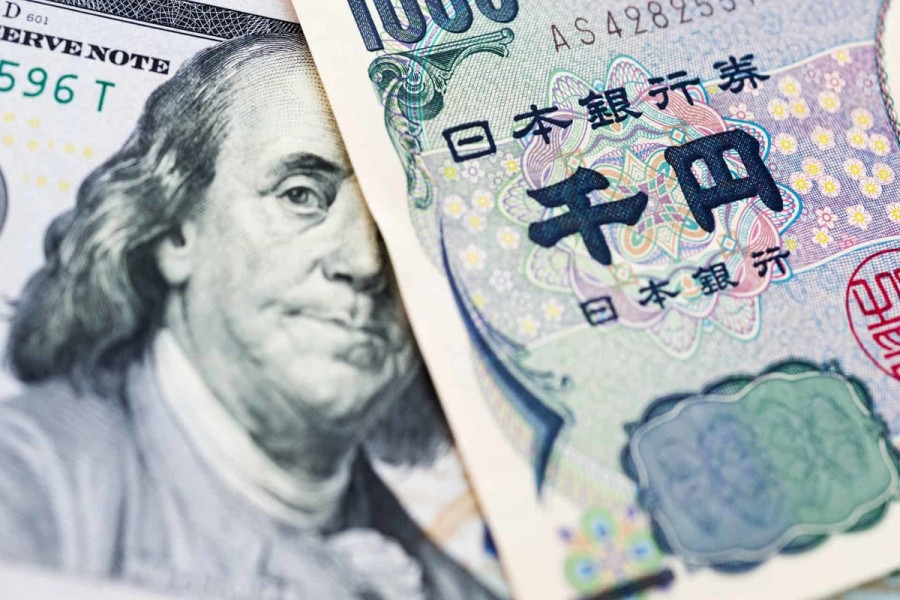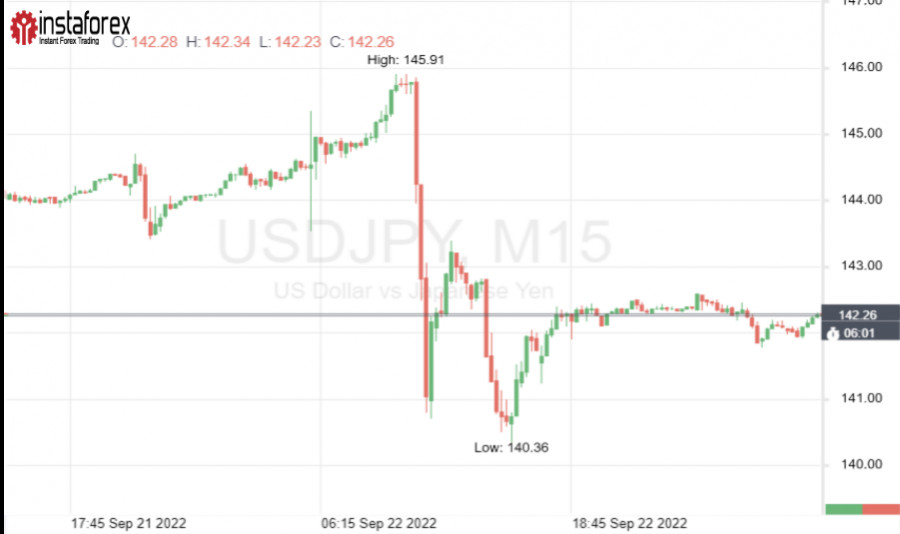

Yesterday was supposed to be black Thursday for the yen, but everything turned out differently. The currency intervention carried out by Japan broke off the Napoleonic plans of USD/JPY. But for how long?
Chronicle of the rise of USD/JPYThe dollar-yen pair was finally able to break through the key 145 mark on Thursday morning, which it has already unsuccessfully stormed twice this month.
The springboard for the asset was the divergence in the monetary policy of the Federal Reserve and the Bank of Japan. This week, the gap in US and Japanese interest rates has widened again.
Recall that on Wednesday evening, the US central bank raised the indicator by 75 bps and hinted at more significant steps in the future.
A few hours later, the Japanese central bank made a statement. As expected by the market, it announced the continuation of an ultra-soft policy and keeping rates at an extremely low level.
The scenario assuming further growth of monetary divergence acted as a powerful impulse for the USD/JPY pair. In just a couple of hours, the dollar soared against the yen by more than 0.5%.
The last jump of the greenback led the USD/JPY asset to another record. Since January, the greenback has strengthened against its Japanese counterpart by 25%. There has not been such an annual growth in the entire history of observations.
However, the Japanese government did not put up with this and pulled the trigger. The currency intervention changed the whole picture overnight.
Dramatic U-turnJapan's intervention cannot be called a "black swan". Many analysts prepared traders for this ahead of time and even named a specific moment when an intervention might occur.
The 145 level really turned out to be the red line. As predicted, Japanese politicians did not allow the yen to fall below this mark.
Japan's first market intervention since 1998, aimed at raising the rate of the JPY, stopped the rapid decline of the currency.
Immediately after the intervention, the dollar-yen pair plummeted by more than 500 points, or 2.6%. Yesterday's low was the 140.35 mark.

This morning, the Japanese yen is trading around 142 and is on track for its first weekly gain in more than a month.
However, many analysts believe that it will not be easy for the Japanese currency to gain a foothold at current levels now, when the negative fundamental background prevails.
To keep the JPY rate below 145, the Japanese government will most likely have to conduct more than one intervention.
The risk that the authorities may intervene again is quite high.
As the second largest foreign exchange reserve in the world, the BOJ has sufficient reserves to continue supporting the yen.
At the end of August, Japan's reserves exceeded $1.17 trillion, while the average daily trading volume of the national currency in Tokyo was about $479 billion.
According to economists, this reserve is large enough for the BOJ to strengthen the yen until the end of the Fed's policy tightening cycle, which should come by mid-2023.
Put aside the panicOf course, the significant foreign exchange reserve that Japan can use to support the yen scares traders who are playing bullish in the USD/JPY pair.
However, most analysts believe that there is no reason to panic. Even a series of interventions will not be able to change the downward trend in the Japanese currency.
For the steady growth of the JPY, first of all, positive fundamental factors are needed, and there are none.
The main obstacle on the yen's way up is the growing divergence in the monetary policy of the BOJ and the US central bank.
The Japanese currency will remain under strong pressure until the BOJ retreats from its dovish position or the Fed begins to wind down the tightening of the monetary policy.
The growing monetary divergence will eventually outweigh any intervention, Rabobank analysts are certain. Despite the risk of further interventions, they maintain their medium-term forecast for the USD/JPY pair at the level of 147.
And many colleagues agree with them. According to analysts, purchases of the yen by the BOJ will be perceived by the dollar-yen asset as mosquito bites: it will be a bit of a shame, but it will pass quite quickly.